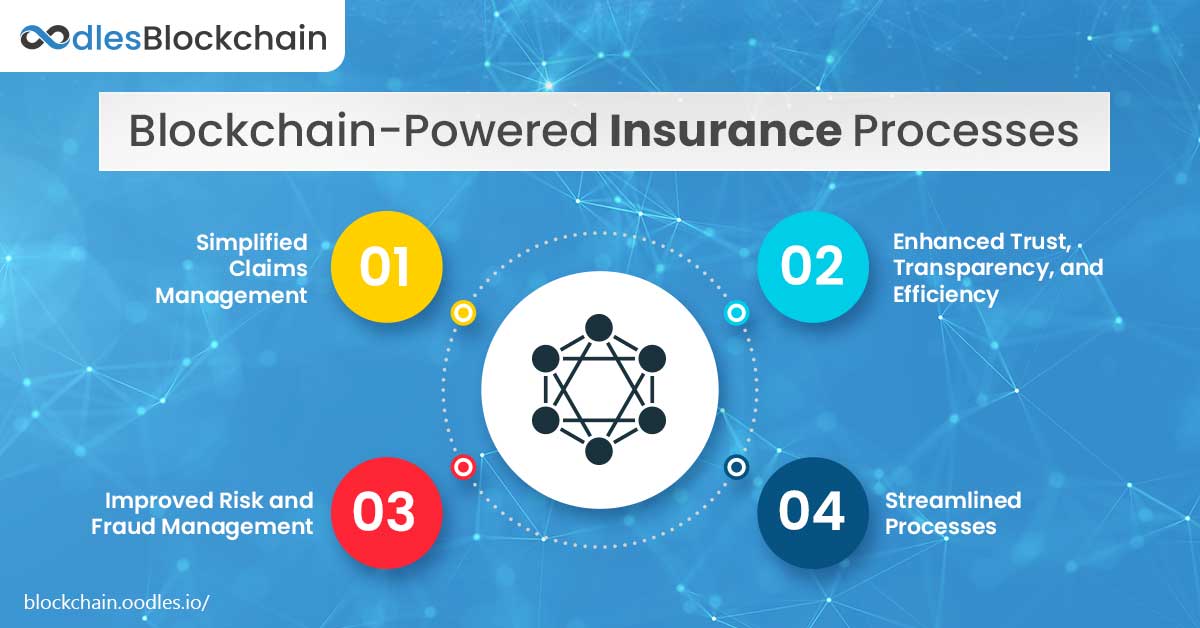
The insurance industry is one of the most traditional, bureaucratic, and walled sectors. Now, it is awakening from its slumber and exploring new technology for achieving efficiency. Increased customer distrust in centralized financial services, resulting in high underinsurance rates, is driving its reluctant yet solid interest in innovations. Especially, key players are exploring applications and smart contract solutions with blockchain technology in insurance.
Insurance companies, driven by both curiosity and fear, have started to hire blockchain development companies to assist them with the implementation of blockchain solutions. Curiosity stems from blockchain as it promises to reduce the overall time and transaction costs while increasing operational efficiency. However, insurers also fear this innovation, it can open up new cyber-attack vulnerabilities.
So, now let’s explore how insurance companies can safely adopt blockchain solutions and stop being a laggard in comparison to other sectors of financial services.
Blockchain’s Role in Insurance
Firstly, let’s understand the blockchain technology and its characteristics.
Blockchain technology follows the concept of distributed ledger and, thus, eliminates the need for intermediaries. It stores and distributes copies of the shared ledger at multiple user locations. As a result, it provides access to the same source of data in real-time to any permission insurance company, agent, broker, underwriter, or insured people or organizations. Blockchain uses encryption and consensus mechanisms to register all the transactions on the database blockchain. Also, it publishes all the changes to the records as additions to the original data.
If we talk about its realistic implementation of blockchain solutions in insurance, they may provide the following advantage.
Sharing of medical records between hospitals and insurers (even across borders) with the help of blockchain-powered encryptions and its other feature-rich characteristics. Consequently, it prevents or identifies duplicated and erroneous records, prolonged claim processing, claim denials, and excessive check-ups.
Blockchain Implementation in Insurance
As per a 2019 survey of Accenture Technology Vision, over 80 percent of insurance companies claimed to adopt blockchain technology. It is true that most insurance blockchain projects are lingering at the concept stage. However, some firms have chosen to collaborate and form alliances to accelerate adoption. The likes of such firms include the Blockchain Insurance Industry Initiative (B3i) or the RiskStream Collaborative of the institutes. These trailblazing alliances are developing blockchain-based platforms to adopt the following cases of blockchain use.
Preventing fraud and misconduct
Fraud costs monstrous sums of money to the insurance industry. Mostly, because it is impossible to detect fraudulent activities with traditional methods based on the use of publicly available data and private data sources. As a result, the data collected are typically scattered due to legal restrictions that surround personally identifiable data. Unfortunately, fraudsters are compromising those visibility gaps. For example, for one single care case, multiple claims may be filed.
Once data is stored on a blockchain-based database, cryptographic signatures and granular permission settings are in place to secure it. It means both parties are able to exchange data and check their validity without disclosing confidential information. A distributed ledger enables the collection of historical data and helps businesses detect suspicious trends, like:
- Multiple treatments of the same claim
- Manipulating possession of an insurance policy
- Insurance sold by brokers without a license
- Insurance companies can offer customers encrypted digital ID cards that cannot be faked to achieve even greater security.
























